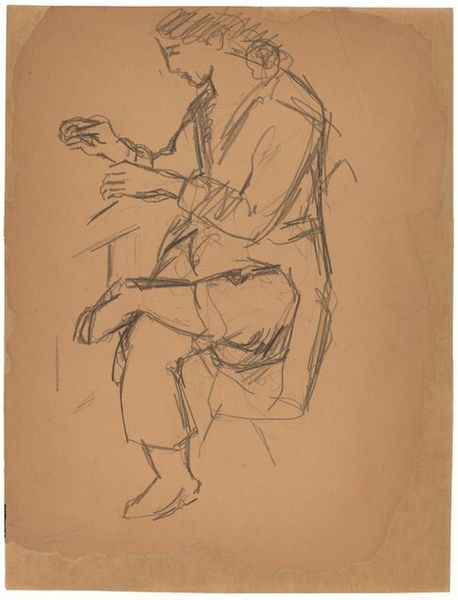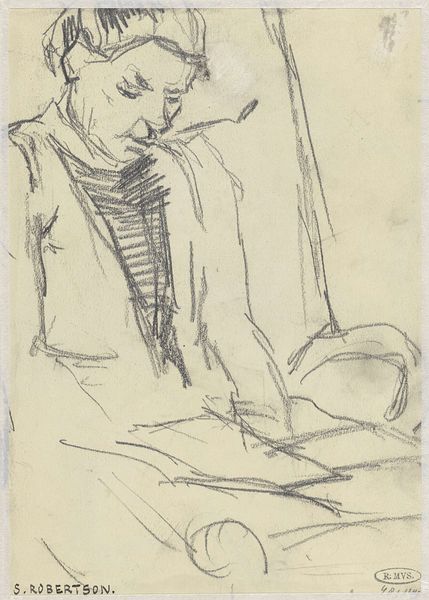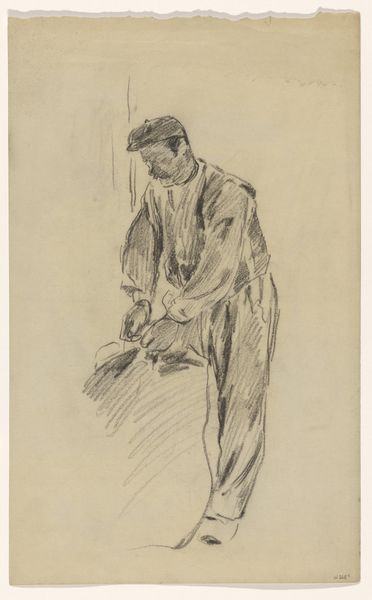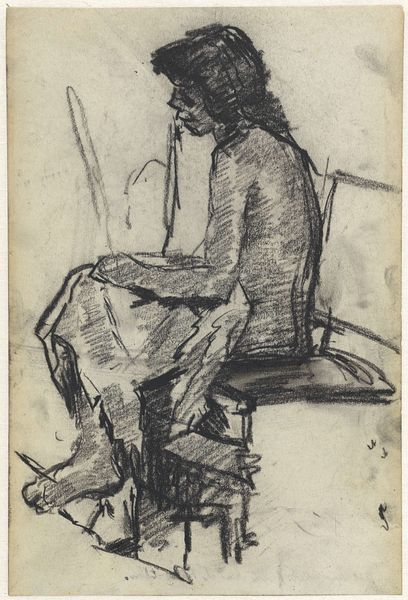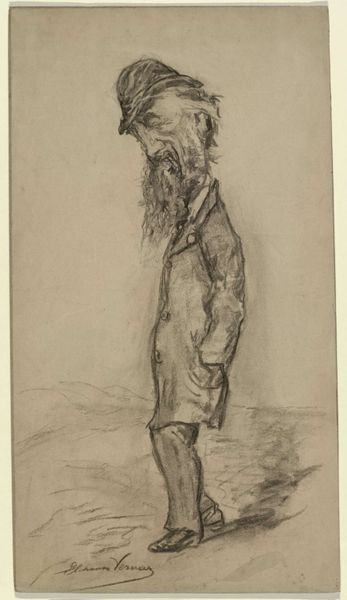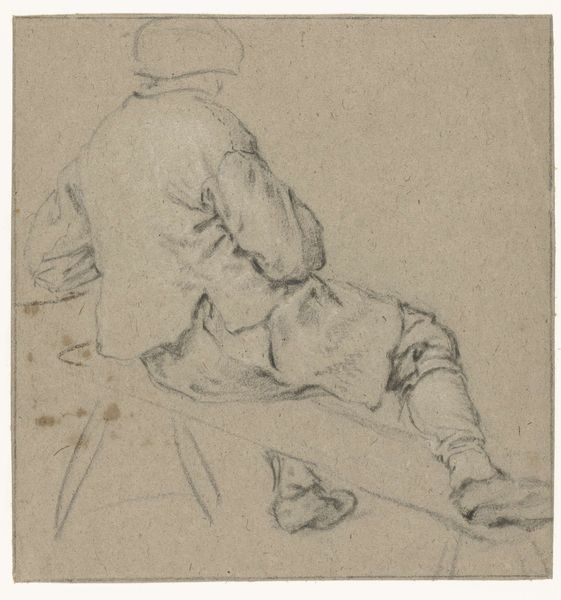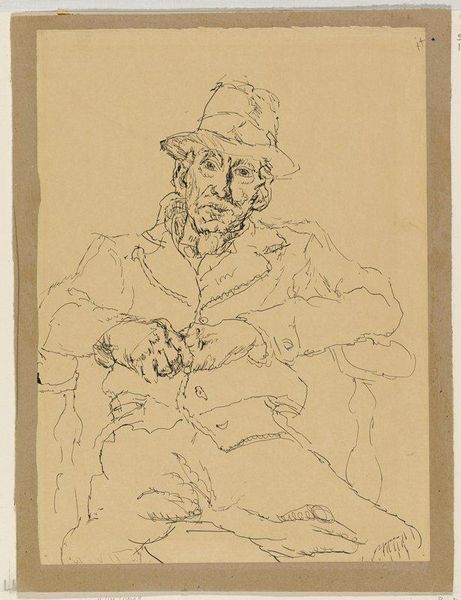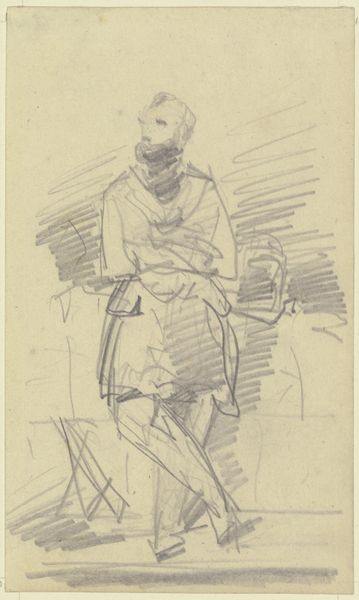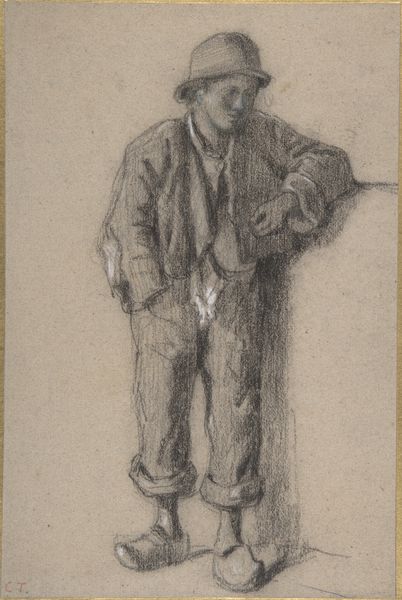
drawing, paper, pencil
#
portrait
#
drawing
#
pencil sketch
#
figuration
#
paper
#
pencil drawing
#
pencil
#
portrait drawing
#
realism
Dimensions: height 366 mm, width 220 mm
Copyright: Rijks Museum: Open Domain
Curator: This drawing is titled "Zittende man," or "Seated Man," created by Johannes Abraham Mondt sometime between 1869 and 1941. Editor: My immediate response is one of quiet contemplation. There's a sense of relaxed vulnerability in the man's posture, a sort of unstudied elegance in the composition. Curator: Mondt's choice of pencil on paper provides a fascinating lens through which we might view this figure, and the culture that shaped both artist and subject. The very affordability of the medium suggests accessibility, perhaps reflecting a democratic impulse in portraiture. What stories do you think these lines tell? Editor: Semiotically speaking, the lines themselves are crucial. Notice how the varying pressures create depth and shadow, especially around his face and torso. It speaks to a desire for realism, for capturing not just likeness, but the weight and texture of human existence. The very minimal rendering directs your focus to ponder his expression, to imagine his thoughts. Curator: Consider also the socio-economic context: pencil as a readily available material democratizing artmaking, bringing representation to a wider sphere. Was this portrait commissioned, a study, or an act of artistic exploration on Mondt’s part? What was the social position of this sitter? His open shirt suggests the sitter doesn’t hold high status or wasn’t of elevated birth. The slight cropping seems quite intentional too; suggesting something unfinished… incomplete even. Editor: That incompleteness adds to its evocative power. We are given enough information to interpret some message from the portrait; his clothes, pose and affect, but as viewers we are still asked to complete the scene in our own minds. The structural relationship of the figure to the blank space reinforces a kind of introspective mood. We’re drawn into the intimate moment, privy to this moment of repose. Curator: And yet, even within that repose, the materiality betrays a constructed image. We are aware of the pencil strokes, the artistic labour, making us cognizant of the fact that what we view here is artifice – a rendering fashioned via social, economic and artistic means. How does that mediation affect the viewer's experience? Editor: By acknowledging the mediation, we appreciate the artist’s choices. The composition guides our reading. He looks off and away – a subtle yet poignant statement about alienation and quiet self-reflection. A lovely dialogue of line, tone, and affect to study for a long while yet. Curator: Indeed, each stroke whispers untold stories about both the subject and the conditions of representation. I feel similarly – Mondt makes you pause.
Comments
No comments
Be the first to comment and join the conversation on the ultimate creative platform.
